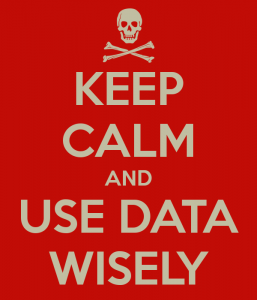 The aim of my blog series is to discuss areas essential in gearing more towards analytically-based marketing, or data-driven marketing, if you prefer that term. My first blog briefly dealt with making a plan. You need a plan in order to know where you want to get.
The aim of my blog series is to discuss areas essential in gearing more towards analytically-based marketing, or data-driven marketing, if you prefer that term. My first blog briefly dealt with making a plan. You need a plan in order to know where you want to get.
Keeping up with the “tradition” I have of presenting a quote in Finnish right at the beginning of my blog post, this time I will go with “tieto lisää tuskaa”. Translated that would mean “information (or data or knowledge) increases distress”. (You can, if you choose to, disregard the fact that Tieto is the name of the largest Nordic IT services company.) In this spirit, I will go forward on our journey to improve our marketing capabilities by shortly discussing the subject of data.
It takes people, process, and technology
In order to map the marketing landscape of current or potential customers, I usually look at three aspects of the landscape: people, process, and technology. All are important aspects of development when improving marketing functions, and all need, to some extent, to be in place in order to become more successful. The people, processes, and technology surrounding data are among the most important ones to be able to move forward in data-driven marketing maturity.
Now, there are a bunch of other blogs out there by highly data-qualified people discussing the virtues and challenges of data in general – and some of the marketing data in particular, for example here. On a general and quite rudimentary level, my take on it is as follows:
It IS big, but don’t make it TOO big
It’s really easy to start by concluding that you don’t have the data in place. And at the same time conclude that you probably will not get anywhere because you don’t have the data. The fact is, in my career I’ve never worked in or met with a company that would have all the data they want for marketing purposes. Which, of course, should not hinder anyone from setting off on their data-driven marketing journey. There are so many ways to say this that I really don’t know which way to pick, but here are my two favorites:
- It’s an evolution, not a revolution.
- You can’t eat the whole elephant in one bite.
Regardless of the way you want to put it, the message is the same.
Right now is probably as good a time as any to state one important fact: Data are not God. They are not nirvana, bliss, or the only road to riches and fame either. In marketing, there will always be a need to combine experience, expertise, and common sense with the additional knowledge derived from data. But at the same time, the Chief Marketing Technologist says “Relying solely on gut-based, experience-driven decision-making in marketing is foolish in the digital age”.
Hoping not to contradict myself too much, it is also very important to note this: Do not underestimate the value of, and the difficulty in, finding the right data. Not to speak of making that data accessible, ensure their quality, and to make sure they are always fresh enough when you need them. As one of our successful customers put it: By far the largest amount of work has been put into finding, structuring, and securing good data. Compared to data, building dashboards, or almost any other activity related to setting up an analytically-based marketing function, has been quite easy. As stated in the fine Teradata Data-Driven Marketing Survey 2013, “less than 10% of companies use the data they currently have access to in a systematic, strategic way”. I’m pretty sure that it’s not because they do not want to, rather it’s a symptom of the challenges inherent in data and information management.
What then?
So I’ve now mentioned how valuable, difficult, important, complex, and under-used data in marketing are today. I have not as yet said very much about what to do about it. Instead of doing that, I recommend this article: A marketer’s journey through the big data archipelago. It discusses these 10 key topics: analytics, processing, integration, open source adoption, location, data governance, data security, people, investment, and strategy. Be warned though: It contains the words “big data” a number of times. For some reason it now seems to be a trend to “hate” the term big data. Can anyone tell me why?
